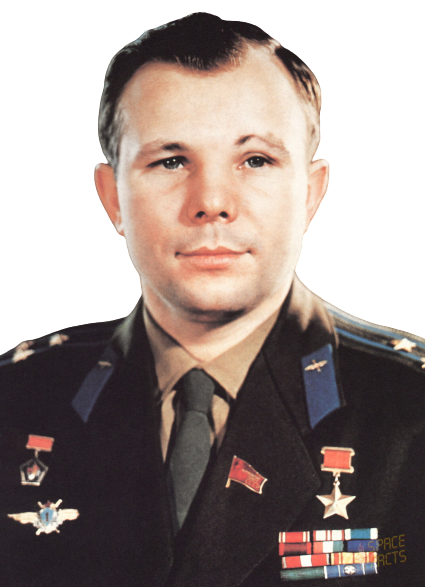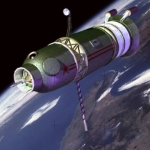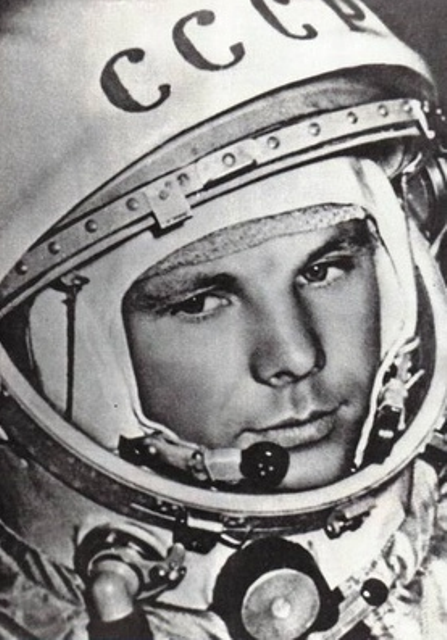
12.01.2023
For a long time a socio-psychological phenomenon has been known to manifest itself in ascribing to authority figures of the past ideas and beliefs which they did not share in order to strengthen the ideologies of the present. Above we discussed the example of how the pre-war Soviet ideologists wrote off any Russian nobleman as a revolutionary if he said at least once such things against the autocracy.
In human terms, such a switch is understandable: we all dream of having as many sympathetic, let alone world-famous people as possible share our convictions, and if they don’t, we can always use publicity techniques to portray it as though they were getting ready to share, just not being aware, poor souls, of what happiness awaits them.
In the last decade of the Soviet Union Yuri Gagarin was presented as a follower of Russian cosmism – an artificial metaphysical doctrine under the virtual banner of which they tried to unite those thinkers of the past who were interested in the question of the interaction of microcosm and macrocosm and who were not too far away from materialism in their intellectual search. Russian cosmists included, for example, Nikolai Fedorovich Fedorov and Konstantin Eduardovich Tsiolkovsky. Although there is no serious ideological connection between them, Fyodorov and Tsiolkovsky were positioned according to the teacher-student scheme, and Gagarin turned out to be a successor of both. To prove this controversial thesis, Victor Anatolyevich Mitroshenkov in his books even attributed to Gagarin reading literature that he could not read, as we have seen above. Undoubtedly, Yuri Alekseyevich was in a sense a cosmist, but in his beliefs very far from Fedorov’s “religion of resurrection” and Tsiolkovsky’s “panpsychism” – he treated extraterrestrial expansion like Sergey Pavlovich Korolev, that is, with the pragmatism of a man who saw that this majestic cause was the future, and wanted to join it in order to always be ahead of the rest.

Today Russian cosmism attracts little attention, but the Orthodox faith is spreading widely. Since the wave of desecularization is trying to register all the more or less decent people of the past as Orthodox, it is not surprising that at some point they got to Gagarin.
In 2010 Roskosmos TV studio released a documentary by filmmakers Larisa Smirnova and Dmitry Svergun “Space as obedience” about the connection between Orthodoxy and cosmonautics. Among the eyewitnesses of long ago, presented in the film, is a certain Valentin Vasilievich Petrov, who claims that he knew Gagarin well from studying at the Zhukovsky Military Air Engineering Academy and once personally took the cosmonaut to the Holy Trinity Sergius Lavra: “But Gagarin was shocked by one thing – a model of Christ the Savior Cathedral… And he looked and said, ‘And where is this temple? And the priest says, “Well, over there, where that puddle is – the Moskva Pool”. Two weeks later there is a plenum of the Central Committee for Youth Education, and he takes the podium… We were given an agreed text in the Central Committee. He reads the text, then turns away and says: “What kind of patriotic education of youth can we talk about, when they blew up the Temple of Military Glory? I,” he says, “have only seen one model, and my soul sinks. And I never thought that Gagarin would have such courage. Next, the filmmakers turn the story of Gagarin’s “scandalous speech” at the “plenum of the Central Committee” into a real detective story. It was forbidden to write about it in the press, and those who were there and retold it were made fun of. The film crew found the decisive proof of truthfulness of Petrov’s words in the Archive of Social and Political History, where specialist Galina Tokareva works: before the eyes of the audience, she pulls from the shelf a transcript of Gagarin’s speech at the plenum of the Central Committee of Komsomol, signed by him, and reads fragments: “In Moscow the Arc de Triomphe of 1812 was removed and not rebuilt; the Cathedral of Christ the Savior, built with money collected throughout the country in honor of the victory over Napoleon, was destroyed.” Here it is – the proof! “This folder is forty-five years old,” the author of the voice-over informs us. – Historians have not been interested in it for one reason only – they don’t believe it exists…”
Colonel Valentin Vasilyevich Petrov was not limited to participation in the film. It turns out that he had long and persistently laid out his version of Gagarin’s initiation into the mysteries of true faith. Here, for example, what he said in an interview with Interfax-Religion, dated April 22, 2006: “Yuri Alekseevich, like all Russian people, was a baptized man and, as far as I know, a believer. For me, our joint trip to the Trinity-Sergius Lavra in 1964, when Gagarin turned 30, remains unforgettable. Gagarin, so perky by nature, once asked me directly if I had been to the Lavra. After receiving an affirmative answer, he suggested we go again, and we went right away in the evening, dressed in “civilian clothes. Fools for fools, of course, because you can’t dress Gagarin up in anything… When we arrived at the Lavra, a crowd of people went to him for autographs. The service was not even over yet, but when everyone heard about Gagarin’s arrival, they rushed to him. Such was the people’s love for Yura, and he could not refuse anyone. ‘…’
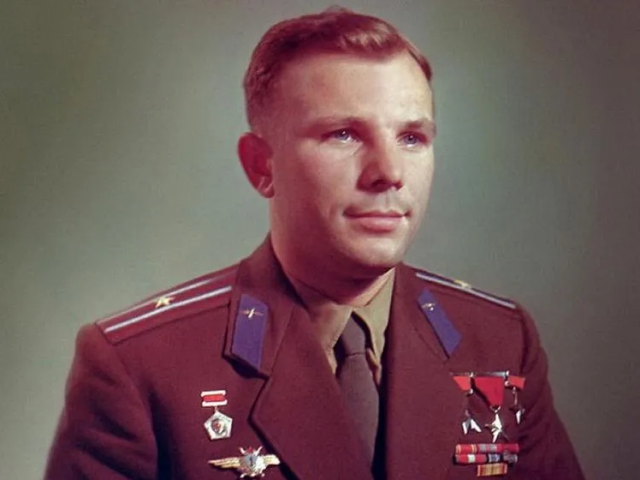
Then Father Vicar suggested that we visit the CAC. We answered in surprise: “What are you, Father, the ladies were in TsAGI!”, referring to our Central Aero-Hydrodynamic Institute. Then it turned out that it was about the Ecclesiastical and Archaeological Study at the Moscow Theological Academy. We went there, of course, and there was an incident that shook me completely. When we approached the model of the Cathedral of Christ the Savior, Yura looked inside, looked and said to me, “Valentin, look at what a beauty they destroyed!” He stared at it for a very long time then…
When we returned from Lavra that time, we were so impressed by everything we saw that we drove as if under hypnosis. Yura suddenly said to me: “Valentine, think about the words: ‘and ecu in heaven.'” I opened my eyes, “Yuri Alekseyevich, do you know the prayers?” He said, “And you think you’re the only one who knows them? Well, you know how to keep quiet.” And this was 1964, the time when Khrushchev was making promises to “show the last priest”…
I was accused of “dragging” Gagarin into religion. Gagarin saved me, he said: “How is it – the colonel’s captain drags you into religion?! He didn’t drive me – we rode in my car. As a result, I was reprimanded by the party line for “introducing Yuri Gagarin to Orthodoxy,” and now I am very proud of it.
And some time after our trip Yuri Gagarin, speaking at the meeting of the Central Committee Plenum on Education of Youth, openly offered to restore the Cathedral of Christ the Savior as a monument of military glory, as an outstanding work of Orthodoxy. At the same time he proposed to restore the then destroyed Arc de Triomphe. Gagarin’s motive was very simple: you cannot raise patriotism without knowing your roots. Since the Cathedral of Christ the Savior is a monument of military glory, people who go to defend their homeland should know this.

No one at the plenum, of course, expected such words from the first cosmonaut, the reaction was terrific, there was thunderous applause. The presidium, of course, was seriously frightened, but they could not do anything against Yuri Alexeevich, of course.
There are more recent statements. Read on the website of the Moscow Orthodox Theological Academy (entry from October 12, 2012):
“Yuri Alexeevich and Valentin Vasilievich went to Lavra at the end of March 1964. When they first entered the Lavra, Gagarin was immediately recognized … people began to gather, taking autographs. He did not want to sadden anyone, and it seemed that his desire to see ancient temples ended in failure. The situation was saved by the vicar of the Lavra, who escorted the guests to his cell. After that the cosmonauts went to the temple and came to relics of the venerable Sergius. They also decided to visit the CAC [Church Archaeological Cabinet]. Before one of the exhibits Yuri Gagarin stopped in admiration. It was a model of Christ the Savior Cathedral in Moscow:
- Valya, look, what a beauty!
- Yes…
- Where is the temple?
- Where?… Where the Moscow swimming pool is…
The temple fell into Gagarin’s heart, especially as it was a monument not only to Russian Orthodoxy but also to Russian military glory. And as it turned out, this visit to the Moscow Theological Academy was not in vain. A few months later at the plenum of the Komsomol Central Committee Yuri Gagarin, speaking with a speech about the patriotic education of youth, proposed restoration of the Cathedral of Christ the Savior, and along with the Triumphal Arch as monuments of military glory of Russia! The incident was hushed up at the time, but nevertheless, the fact remains that Yuri Gagarin was the first who proposed to rebuild the Cathedral of Christ the Savior. And that was in 1965! And after that Valentin Vasilyevich was summoned to the Party Bureau, where he was reprimanded “for an attempt to drag the first Russian cosmonaut into Orthodoxy.”
When comparing these texts, first of all the difference in dates is alarming. Colonel Petrov says that he took Gagarin to the Lavra in the days closest to the 30th birthday of the cosmonaut (March 9, 1964), another version mentions the end of March 1964, and the third one – transfers the action to 1965, when the plenum of the Komsomol Central Committee was held, where Gagarin allegedly made his unclassified speech.
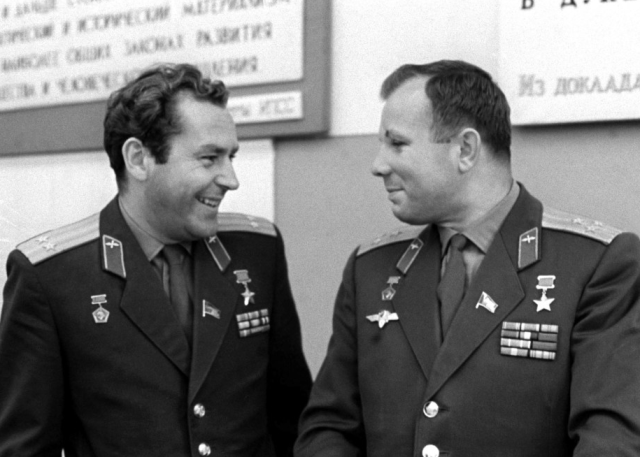
However, let’s not be picky – the events took place long ago, and the witness could have mixed up the dates. It is better to find the “classified for forty-five years” speech. And for that we will not need to go down into the basement of the archive and look through the folders, because the full transcript has been… published twice! We open the collections of Gagarin’s articles and speeches under the same name “There is a flame!”, published in 1968 (circulation 50 000 copies) and in 1971 (circulation 125 000 copies), we find in them one and the same “Speech at the XVIII Plenum of the Central Committee of Komsomol. December 1965” and read the lines we are looking for: “In my opinion, we do not yet educate enough about respect for the heroic past, often without thinking about the preservation of monuments. In Moscow, the Arc de Triomphe of 1812 was removed and not rebuilt; the Cathedral of Christ the Savior, built with money collected throughout the country to honor the victory over Napoleon, was destroyed. Did the name of this monument overshadow its patriotic essence?
I could go on and on in my list of victims of barbaric treatment of monuments of the past. Unfortunately, there are a lot of examples.
You will say that Gagarin criticized everyone, but do cosmonauts have their own traditions? Yes, there are. It became an unwritten rule that before a flight a cosmonaut comes to Red Square to Lenin Mausoleum and vows to fulfill the assigned task, no matter what it takes. A few days before the flight, we have traditional meetings at which specialists, cosmonauts and their doubles report on their readiness for the flight.
Visiting Tsiolkovsky’s homeland upon returning from space has become a tradition. This is a kind of report to the great founders of cosmonautics”.
As you see, it does not follow from this fragment that Yuri Gagarin was going to rebuild the temple of Christ the Savior and somehow contribute to the revival of Orthodoxy. Rather, on the contrary, he speaks of the newest traditions, consecrated by the October Revolution and the genius of Tsiolkovsky. As for the remark about the “barbaric attitude towards the monuments of the past”, after the 22nd Congress it became fashionable to criticize the Stalinist epoch: let
me remind you that the church was blown up in December 1931 to make way for the pompous Palace of Soviets, which was never built.
So, what do we have in the end? The story of Gagarin’s accession falls apart at the first inspection. We have nothing except the words of Valentin Vasilievich Petrov, who cannot act as a witness, because he looks like an interested person, using the actual topic for self-promotion.
Yuri Gagarin’s speech at the plenum confirms something else entirely – the consistent adherence of the first cosmonaut to Soviet patriotic ideology, born in the late 1930s and solidified during the terrible war. Gagarin’s personal beliefs were formed under its influence, and in many ways it was this ideology that helped him find his place in the world. And in eternity.
